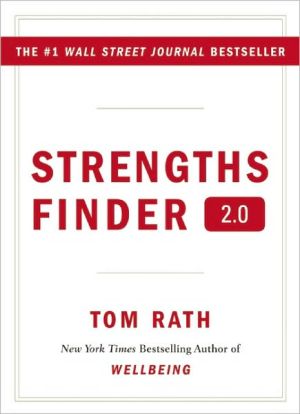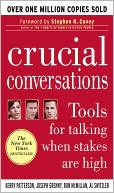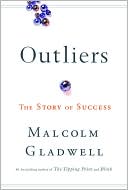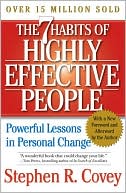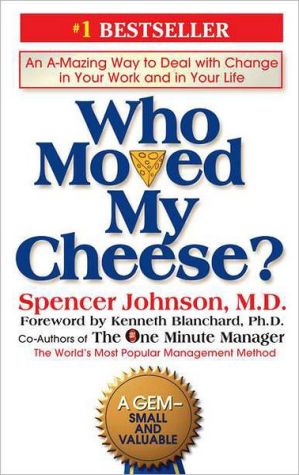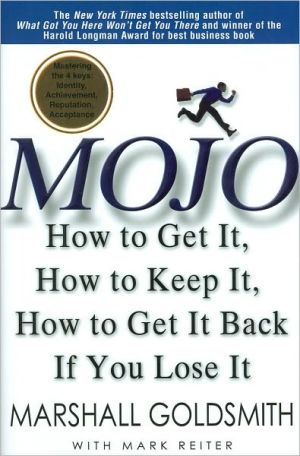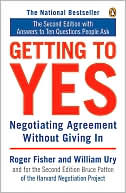The Art and Practice of Leadership Coaching: 50 Top Executive Coaches Reveal Their Secrets
This landmark resource presents a wide variety of perspectives and proven best practices from fifty of today's top executive coaches:\ Nancy J. Adler John Alexander David Allen Shirley Anderson Julie Anixter Marian Baker Joel Barker Kim Barnes Christopher A. Bartlett Ken Blanchard Jim Bolt William Bridges W. Warner Burke Niko Canner Jay Conger Bill Davidson David Dotlich Leigh Fountain Robert M. Fulmer Joel Garfinkle Fariborz Ghadar David Giber Marshall Goldsmith Vijay Govindarajan Michael...
Search in google:
Leadership coaching is vital to today's most successful organizations. In fact, around half of the top companies for leaders now assign coaches to their most promising employees. And more organizations are catching on every day. The Art and Practice of Leadership Coaching is a landmark resource that presents a variety of perspectives and best practices from today's top executive coaches. It provides valuable guidance on exactly what the best coaches are now doing to get the most out of leaders, for now and into the future.Revealing core philosophies, critical capabilities, and the secrets of coaching success, this one-of-a-kind guide includes essays from fifty top coaches, including Ken Blanchard, Michael Hammer, Sally Helgesen, Frances Hesselbein, Beverly Kaye, Jim Kouzes, C.K. Prahalad, Noel M. Tichy, Dave Ulrich, and many others. The essays here are divided into five distinct categories—behavioral, leadership development, career/life transitions, organizational change, and strategy—offering unparalleled coverage of every aspect of leadership coaching.The contributors offer in-depth discussions on topics such as selecting the right coach, maximizing the impact of coaching, and leveraging the latest trends and strategies. The book also includes the newest research and practical tools such as checklists, performance assessments, and quick tips. Packed with astute personal observations, detailed analyses, helpful best practices, and cutting-edge ideas, this practical guide is the definitive source for those who want (or need) to master the art and practice of coaching leaders. Leadership coaching has emerged as a powerful tool for accelerating the performance of promising executives and attaining competitive advantage through that talent. The Art and Practice of Leadership Coaching provides everything that you need to employ that tool with (and for) maximum impact.
The Art and Practice of Leadership Coaching\ \ By Howard Morgan \ John Wiley & Sons\ ISBN: 0-471-70546-2 \ \ \ Chapter One\ The Coaching Landscape\ by Linkage, Inc.\ Coaching is exploding as an industry. Today, more and more coaches, from an ever-widening circle of backgrounds and schools of thought, offer their services to organizations and individuals. The need within organizations, particularly at senior levels, for this form of development work has grown at an equally rapid rate.\ As coaches ourselves, we care deeply about the work that we do and the profession we represent. We are aware that there is a great deal of debate in the field today. What is best practice? What is the optimal length of a coaching engagement? Who is the client-the coachee or the organization paying the bill? How should impact and return on investment be measured? What is the line between personal and business issues? How can confidentiality be preserved when supervisors and colleagues are part of the mix? Should coaching be limited to top executives or extended to deeper levels of the organization? What are the benefits of using external coaches rather than internal coaches and vice versa?\ As with any new discipline, much remains to be settled. In this book, we define coaching, describe some categories it falls into, outline the skills and attributes that we think make for best practice, and guide clients and coachees to maximize the impact of their coaching engagements. In short, we hope toprovide some of the structure that a relatively new and rapidly expanding field needs.\ Our perspectives derive from personal experience, extensive research, and much discussion. Nevertheless, we recognize that, like coaching itself, our views are evolving. Although we hope to mark out territory that will come to be adopted as an industry standard, we also want to engage in an open dialogue. In fact, this book has been designed not as a final declaration, but as one volume in a series of observations and analyses of trends, best practices, and leading-edge thinking. As such, we invite coaches and clients alike to join the debate. We want to encourage an inflow of other viewpoints, experiences, and perspectives. Perhaps, in the best of all outcomes, this book will serve as a forum to maximize the impact of coaching, by being rigorous, critical, and forward-thinking about how coaching can meet the needs of those we aim to serve.\ Our Methodology\ Working in conjunction with the editors, we designed this book with three constituents in mind: the coach, the coachee, and the client organization. We developed our conclusions by triangulating a number of data streams.\ First, we held extensive conversations with more than 50 top coaches and recognized thought leaders working today. Each coach provided us with a profile of his or her own personal philosophy and area of expertise by describing his or her approach, methodology, and attributes. From those interviews and profiles, we developed our ideas of coaching by category and best practice. We also learned a great deal about the trends and issues shaping the field.\ Second, we surveyed coaches and organizations, primarily in North America but with some representation all over the world, to determine how coaching services are being bought and sold in the marketplace. This research gave us an indication of what consumers are looking for, what coaches are providing, how much is being spent, what areas are considered to be priorities for the future, and how all of this has changed in recent years.\ Finally, by doing a wide literature search and analyzing the emerging trends and findings, we looked at what others are saying about coaching. In one chapter, we present our conclusions about the most critical of all current issues: How the impact of coaching should be measured in terms of return on investment.\ Although we have drawn our conclusions from this three-pronged approach, the observations are there for anyone to interpret on his or her own. This book represents a collection of views rather than a statement of fact. There are many valuable opinions, perspectives, and approaches that can be lifted from the pages that follow.\ We divided the content into four sections:\ Part I: Working with Coaches. Includes an overview and summation of what we considered to be the latest thinking on how to select the right coach as well as best practices in partnering with a coach for maximum impact. Both were written for the client /coachee/consumer perspective.\ Part II: 50 Top Executive Coaches. Fifty profiles of top coaches are divided into five coaching categories.\ Part III: Internal Coaching. A look at trends in building internal coaching systems as well as an essay on the very topical issue of developing the "leader as coach" capability.\ Part IV: The Coaching Almanac. Includes an analysis of trends, an overview of the coaching marketplace, and a discussion of the latest thinking on the issue of return on investment.\ Linkage's 50 Top Executive Coaches\ How They Were Selected and Who They Are\ In trying to find 50 of the top coaches in North America, we began the search by examining our own large customer base of over 100,000 representatives in business, government services, and nonprofits. We regularly seek such advice on who should be featured in our national conferences, institutes, workshops, summits, and other internal and external programs. As a result, we are frequently a referral source for external and internal coaches. With this in mind, we asked who our customers consider to be the top executive coaches. We developed our primary list from this survey. We then went to the experts and asked the world's top thought leaders who they considered to be the top coaches. After much interviewing, using a rigorous process of de-selection, we made our choices and determined our coaching classifications (for more detail, see below).\ Our customers' first choice as a speaker on executive coaching was Marshall Goldsmith. Marshall's keynotes on behavioral coaching at Linkage events have always received the highest ratings. In the past two years, his work in coaching has been featured in a New Yorker profile, a Harvard Business Review interview, and a Business Strategy Review (London Business School) cover story. Marshall has also been listed in the Wall Street Journal as a "top 10" executive educator, in Forbes as one of five leading executive coaches, in the Business Times (of Asia) as one of 16 top thought leaders of his field, and in Fast Company as America's preeminent executive coach. He was, without question, an easy decision and a logical place to begin our search.\ Marshall agreed to sign on and become a coeditor of the book. We strongly agree with one of Marshall's basic beliefs about coaching. There is no one "best coach" who fits all situations. The best coach is the coach who has unique skills that fit the specific needs of the coaching client. For example, Marshall only does coaching that is related to leadership behavior. He does not do strategic coaching, organizational development, or life planning.\ We next decided to focus on the various types of coaching and tried to find great representatives from these categories. As you review our list of 50 leading coaches, you will see frequent references to our Linkage customer base. For example, three of our most requested speakers are Beverly Kaye (career development and retention), Roosevelt Thomas (diversity), and Warner Burke (organizational development). All of these thought leaders have coaching practices in their various fields and are on our list of 50 coaches. We have also tried to build on research that has been done in related studies by publications like the Wall Street Journal, Forbes, BusinessWeek, and Fortune.\ Rather than focus on business school professors or independent consultants, we decided to include both. Many professors, like C. K. Prahalad, have very active practices in coaching and advising top executives. Many consultants, like Jim Kouzes, sometimes work in university executive education. To the person being coached, it probably doesn't matter. Top executives want the best advice from the best people.\ Every "50 top" list has to have limits. We decided not to include coaches or consultants in technical or functional fields. There are great coaches and advisors in marketing, sales, finance, accounting, operations, and information technology who are not in this book. We decided to focus only on coaching that related to the various aspects of leadership-from strategic leadership (at the macro level) to changing individual behavior (at the micro level). We also decided not to include internal coaches who are currently employed by major corporations. Although these internal coaches may be doing a great job, they will not be available to help the readers of this volume. Our book is also limited to coaches who are currently in North America. Although there are fantastic coaches around the world, we realized that we do not have enough information at the present time to do a high-quality assessment of global talent.\ Selecting Categories for Types of Coaching\ To say, "I am an executive coach," may seem meaningless. An important question is "Coach who to what?" There are many types of coaching and advising. Even narrowing the field to coaching that is related to leadership left a wide range of options. Some executive coaches are helping people plan their lives; others are helping clients become more effective leaders of people; some are changing organizations and others are discussing global strategy. Although there are some overlaps in coaching categories, there are also some vast differences. For example, Vijay Govindarajan focuses on business issues, not behavioral issues, while Marshall Goldsmith focuses on behavioral issues, not business issues. Neither is "better" or "worse." Both are experts in their own fields and are readily willing to state what they don't do.\ In determining the categories for types of coaching, again in close conjunction with the editors, we began with the micro level (changing individual leadership behavior) and moved on to the macro level (determining global strategy). In settling on five categories for coaching, we realize that we do not have a perfect classification. There are many other ways in which we could have "sliced the pie" of coaching. On the other hand, these five categories are a start. We hope that they help you better understand the different types of coaching and how to select a coach that more closely fits the needs of the coaching client. We reserve the right to change and modify these categories over the years as our knowledge of the field of coaching grows.\ Coaching Leaders/Behavioral Coaching\ Behavioral coaches focus on helping leaders achieve a positive long-term change in interpersonal behavior. They give advice on how leaders can build better relationships and become more effective in motivating people. Although the coaches represented in this book tend to work with executives, this type of coaching can be useful for all leaders, including first-line supervisors. Most people who call themselves executive coaches specialize in behavioral coaching. Most requests for coaching involve behavioral issues.\ Career/Life Coaching\ Career or life coaching frequently crosses the line between personal coaching and business coaching. Nevertheless, the coaches in this category saw their work on personal growth, career development, and life issues as having demonstrable value to the organization. The degree to which this tension was an issue is related to the natural difficulty that businesses that are oriented to the bottom line have in connecting the more holistic needs of today's knowledge workers with the challenge of making the numbers. In one way, this group of coaches may do work that is broader than that of behavioral coaches; they spend more time on personal values, personal mission statements, and the broader aspects of life. In another way, these coaches may do work that is narrower than that of behavioral coaches; they focus on the intrapersonal world of one person more than the interpersonal connections with a group.\ Coaching for Leadership Development\ In selecting categories, it seemed important to distinguish between coaches who help leaders become more effective individual leaders, and coaches who help leaders and organizations develop leaders. Coaches in this category ran the gamut of activities from helping an organization develop a cadre of leaders who are great coaches to helping install leadership development programs and systems that ensure an ongoing pipeline of great leaders. Some of these coaches play the role of coach as teacher while others played the role of coach as architect. As opposed to the first two categories, most coaches in this category were striving to help large numbers of leaders or the entire organization, not just the individual or team.\ Coaching for Organizational Change\ This group of coaches focused largely on the execution of organizational change. They engage in a wide variety of challenges, including the organization's capacity for innovation, its view on strategic diversity, its implementation of a merger, and its ability to execute a new strategy. The coaches themselves were defined primarily by the fact that they worked closely with a number of senior leaders (and their teams) to make the change initiative a success.\ Strategy Coaching\ Our strategic coaches worked at the most senior levels, helping top executives set the tone for the long-term direction of the organization. Some coaches worked primarily with the CEO, others with the senior team, still others with "converts" or champions throughout the organization. All mentioned a commitment to guiding the organization's quest for its own future path, rather than imposing a belief or vision of their own.\ As mentioned, the way that coaches fit in categories is far from perfect. Some coaches fell distinctly into their set areas, while others straddled different categories in different parts of their practice. Furthermore, there was a continuum of skills, approaches, and perspectives within each category. Coaches, like all humans, have great variation in their degree of specialization.\ What about General Practitioners?\ What about the general practitioner (GP) coach? Is there a coach who does everything well in all of the categories? We did not find this at the top of the coaching hierarchy.\ Coaches who work at lower levels in the organization may be seen as doing a good job of providing life coaching, strategic coaching, behavioral coaching, and organization coaching at the same time. An experienced coach (with a broad background) may be able to help a first-line manager better solve a wide range of problems and do a good job as a generalist.\ Top executives want to deal with serious experts. This is true from the micro level to the macro level. If top executives are dealing with a micro-level behavioral issue that is alienating top talent, and potentially costing the company millions of dollars, they want the best. If they are dealing with a long-term strategic decision that will impact the company's future, they want the best. Every coach listed in this book is a true expert at something. Some are legitimate experts at two or three things. None claims to be an expert at everything.\ Who Is a Coach and Who Is a Consultant?\ For the purposes of this book, our coaches are world-class advisors who help individuals, teams, and/or corporations increase their leadership effectiveness. We make no claim that we have the ideal definition of coach. This is merely the operational definition we have chosen. Almost all of these advisors could be called both coaches and consultants. We (the editors) have chosen to focus on the portion of their work that they describe as coaching.\ (Continues...)\ \ \ \ \ Excerpted from The Art and Practice of Leadership Coaching by Howard Morgan Excerpted by permission.\ All rights reserved. No part of this excerpt may be reproduced or reprinted without permission in writing from the publisher.\ Excerpts are provided by Dial-A-Book Inc. solely for the personal use of visitors to this web site. \ \
Research partner : Hewitt Associates1The coaching landscape1Pt. IWorking with coaches212Selecting the right coach233Creating a powerful coach-coachee partnership41Pt. II50 top executive coaches534Coaching leaders/behavioral coaching55Marshall Goldsmith56Jim Kouzes61Frances Hesselbein67Jay Conger68Dave Ulrich74Barry Posner76Howard Morgan78Ken Siegel80Bobbie Little83Kim Barnes855Career/life coaching87Richard J. Leider88William Bridges93Beverly Kaye97David Allen100Barbara Moses103Brian Tracy106Shirley Anderson110Joel Garfinkle112Richard Strozzi-Heckler115Marian Baker1176Coaching for leadership development121Noel M. Tichy122Robert M. Fulmer125Ken Blanchard127Paul Hersey130Nancy J. Adler131Albert A. Vicere137John Alexander140Jim Bolt143David Giber146Jim Moore1497Coaching for organizational change153Phil Harkins154W. Warner Burke159Sally Helgesen161R. Roosevelt Thomas, Jr.165Gifford Pinchot168David Dotlich173Stratford Sherman176Gary Ranker179Leigh Fountain183Bruce Pfau1868Strategy coaching189C. K. Prahalad190Vijay Govindarajan196Christopher A. Bartlett199Fariborz Ghadar203Michael Hammer207Joel Barker210Niko Canner213Julie Anixter216Bill Davidson219Judy Rosenblum220Pt. IIIInternal coaching2239Applying the behavioral coaching model organization-wide22510The leader as coach233Pt. IVThe coaching almanac24311Is coaching worth the money? : assessing the ROI of executive coaching24512Interpretative data : what's shaping the coaching marketplace255

